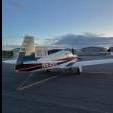Leadville (KLXV) in an NA Mooney?
-
Members Online
- Steven B
- AndreiC
- Rick Junkin
- fehek28092
- Ibra
- DonMuncy
- Hank
- MikeOH
- BrianWilkins
- Gee Bee Aeroproducts
- smccray
- Florian Guthardt
- TangoTango
- PeteMc
- Schllc
- Ragsf15e
- redbaron1982
- Rusty Pilot
- 201er
- chrisburdzy98
- Igor_U
- hubcap
- mooniac58
- Griswold
- NickG
- Mikey30V
- acekng1
- Jay Bird
- AJ88V
- EKoS
- exM20K
- gabez
- mluvara
- donkaye
- Grant_Waite
- Brian2034
- Danb
- Rwsavory
- IvanP
- 201Steve
- Williemike
- Stubby
- UteM20F


Recommended Posts
Join the conversation
You can post now and register later. If you have an account, sign in now to post with your account.